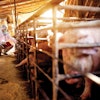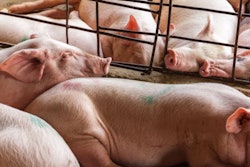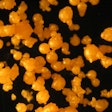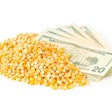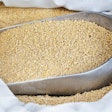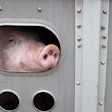
Without explanatory labels, consumer stigma would slow adoption of novel chicken feed
Chicken producers who use novel feed ingredients may want to consider product labeling to avoid consumer stigma, according to new research from the University of Göttingen.
Feeding broiler chickens ingredients such as spirulina or insect meal changes the color of the final meat products, potentially creating a barrier to adoption among consumers. In a survey of German consumers, participants showed a slight preference for insect-fed chicken products, which have a lighter meat color than soy- and algae-fed chickens. Less than one-quarter said they would be willing to purchase the algae-fed chickens, which have a darker, more yellow hue.
However, when consumers were provided with information about how the chickens were fed, willingness to try the alternative options increased. Assuming the price for all three products remained equal, 48.9% of consumers indicated they would buy chicken fed an insect-based diet when informed of the potential environmental benefits of the alternative feed.
The popularity of the darker-colored, algae-fed chicken products remained low unless the meat was cheaper than both alternatives.
While the results showed that labeling alone won’t be enough to persuade most consumers to try less conventional poultry products, they highlight the need for labels to level the playing field for alternative feed ingredients, according to Sven Anders, one of the study’s authors and a professor in the environmental sociology department at the University of Alberta.
“If we put these products to the general mass consumer, even with information, the majority of consumers would not flock to these products,” Anders said. “For these reasons it would make sense to have new ingredients be labeled, maybe even temporarily, until people understand this is a yellow chicken and it was probably fed with something that creates yellow color, so I can buy this because it’s not scary to me.”
If policymakers want to encourage the adoption of alternative feed production at scale, Anders said, they might even consider mandating the declaration of feed ingredients and environmental or even nutritional benefits on poultry products.
Even with the additional information, the novel feeds will likely only appeal to a certain subset of consumers — environmentally health-conscious consumers, such as those who were early adopters of organic food products. Unless the products can be identified, there may not be enough demand among consumers to justify the production of insects and algae at scales that would make these feed ingredients cost competitive, Anders said.
“Unless several things fall into place, I do not think this will leave its niche anytime soon,” he said.
